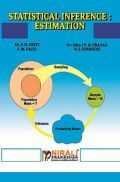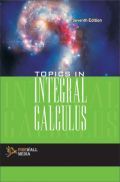Inorganic Chemistry - II by Dr. Geeta Tiwari.
Book Summary:
This book is prepared as per the syllabus of APJ Abdul Kalam Technological University for the third semester of Electrical and Electronics Engineering of the B.Tech program. The purpose of the book is to present the course contents to the students in a precise and simple manner. The majority of the topics in the book were originally prepared during my teaching days as a middle-level faculty. The original text was modified many times after discussions and due deliberations with students and teachers so as to improve its utility. During the preparation, I have used the reference books and textbooks suggested in the syllabus and also many other publications. Though the syllabus is vast, the content of the book is made brief and simple, so that the students can readily use this book as an easy learning material.
Audience of the Book :
This book is Useful for M.SC. Students.
Table of Contents:
Chapter-1: Metal-Ligand Bonding
1. Crystal Field Theory (CFT)
2. Ligand Field Theory (LFT)
3. Octahedral Complexes
4. Tetrahedral Complexes
Questions
Answers
Chapter 2: Reaction Mechanism of Transition Metal Complexes.
1. Reactions in Octahedral Complexes
2. Unimolecular Nucleophilic Substitution Reaction Mechanism (SN1)
3. Bimolecular Nucleophilic Substitution Mechanism (SN 2)
4. Reactivity of Transition Metal Complexes.
5. Substitution Reactions of Octahedral Complexes
6. Redox (Oxidation-Reduction) Reactions (Electron Transfer Reaction)
7. Mechanism of One-Electron Transfer Reaction in Solution Phase
Questions
Answers
Chapter 3: Electronic Spectra and Magnetic Properties of Transition Metal Complexes
1. Quantum Numbers
2. The Energy Terms or Spectroscopic Terms
3. Spectroscopic Ground State.
4. Electronic Transition
5. Relaxation of Selection Rules.
6. Nature of Electronic Band
7. Orgel Diagrams
8. Racah Parameters
9. Nephelauxetic Effect.
10. Tanabe-Sugano Diagrams (T-S Diagrams) for Transition Metal Complexes (d1-d9 states)
11. Calculation of Energy Parameters (do, B, b) with the Help of Tanabe-Sugano Diagrams
12. Spin Free-Spin Paired Equilibrium in Octahedral Geometry (Spin Crossover).
13. Charge Transfer Spectra (CTS)/Redox Spectra
14. Magnetic Properties of Transition Metal Complexes
15. Anomalous Magnetic Moments
16. Magnetic Exchange Coupling
17. Types of Magnetic Phenomenon
18. Spectroscopic Method of Assignment of Absolute Configuration in Optically Active Metal Chelates and their Stereochemical Information
19. Electronic Spectra of Lanthanides and Actinides
Questions
Answers
Appendix
Glossary
Bibliography
Periodic Table.
Index


















